RPN celebrates 100 Forest Guardians by planting forests for red pandas!

On Thursday, April 18th, Krishna Basnet, and Nar Bahadur Basnet walked into the woods on their first day as Forest Guardians (FGs). Within their quiet footsteps was a well-deserved celebration: after many years and much hard work RPN's Forest Guardian program had grown to 100 members strong!
This journey began in 2006 when the Red Panda Project or Project Punde Kundo (red panda is locally known as Punde Kundo) was initiated in Eastern Nepal in three hilly districts—Panchthar-Ilam-Taplejung (or the PIT corridor)—to conduct the first-ever monitoring of red pandas in their wild habitat.
Surendra Rai, and 13 other local villagers (from Maimjhuwa and Mabu village in Ilam and Prangbung and Sidin Village in Panchthar), were selected as the first FGs by the Red Panda Project. The goal of the FG program was to engage and empower community members to safeguard their forests and protect a rare and endangered mammal of the Himalayas: the red panda.
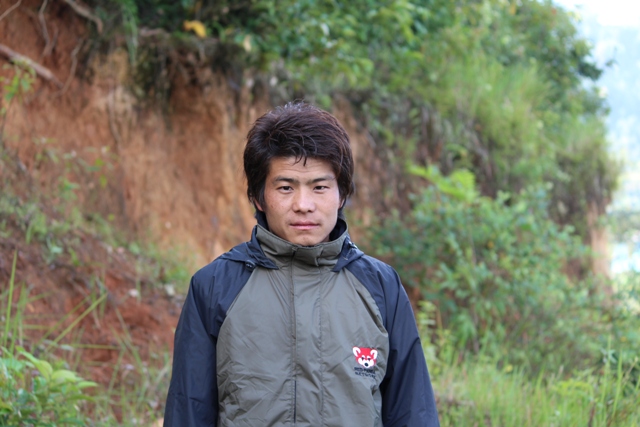 Forest Guardian Surendra Kumar Rai
Forest Guardian Surendra Kumar Rai
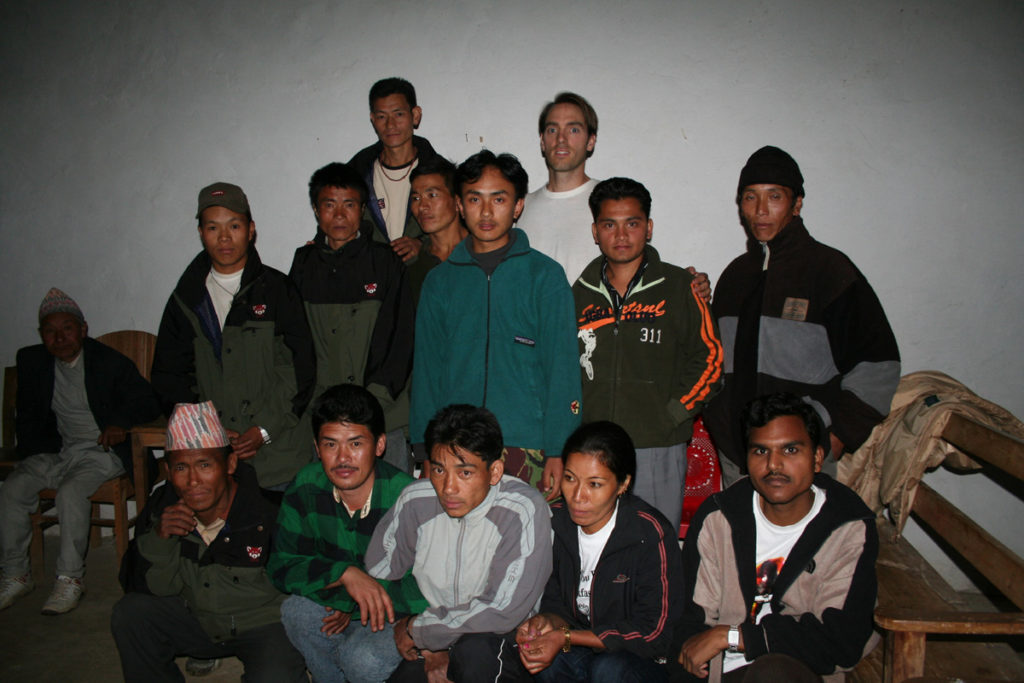 First FGs with RPN founder, Brian Williams. Photo: Wendee Nicole Holtcamp
First FGs with RPN founder, Brian Williams. Photo: Wendee Nicole Holtcamp
Rai grew up spending a lot of time gathering firewood and bamboo and herding livestock in the remote hills of Eastern Nepal. “I caught a glimpse of a red panda sitting on a tree branch while walking home from gathering bamboo one day,” said thirty-eight-year-old Rai. As a child, he had heard stories of the mysterious tree-dwelling animal from his elders. “People were aware of the presence of red pandas in the forests but had no idea how important they were,” he said.
Rai began learning more about red pandas, and as he did, the importance of their preservation became more obvious. It was clear that the surrounding forests were under tremendous pressure due to the activities of people living in area communities. “I began to educate locals about the importance of forests and wildlife conservation and how we can protect these valuable resources.”
In 2010, the Red Panda Project became the Red Panda Network (RPN) with the goal of expanding conservation initiatives to all red panda range countries.
Since its beginning 13 years ago the FG program has expanded beyond the PIT corridor and now includes 10 districts across Nepal. The recent hiring of Krishna Basnet and Nar Bahadur Basnet in the Jajarkot district of Western Nepal has brought the Forest Guardian program to a watershed moment — 100 Forest Guardians.
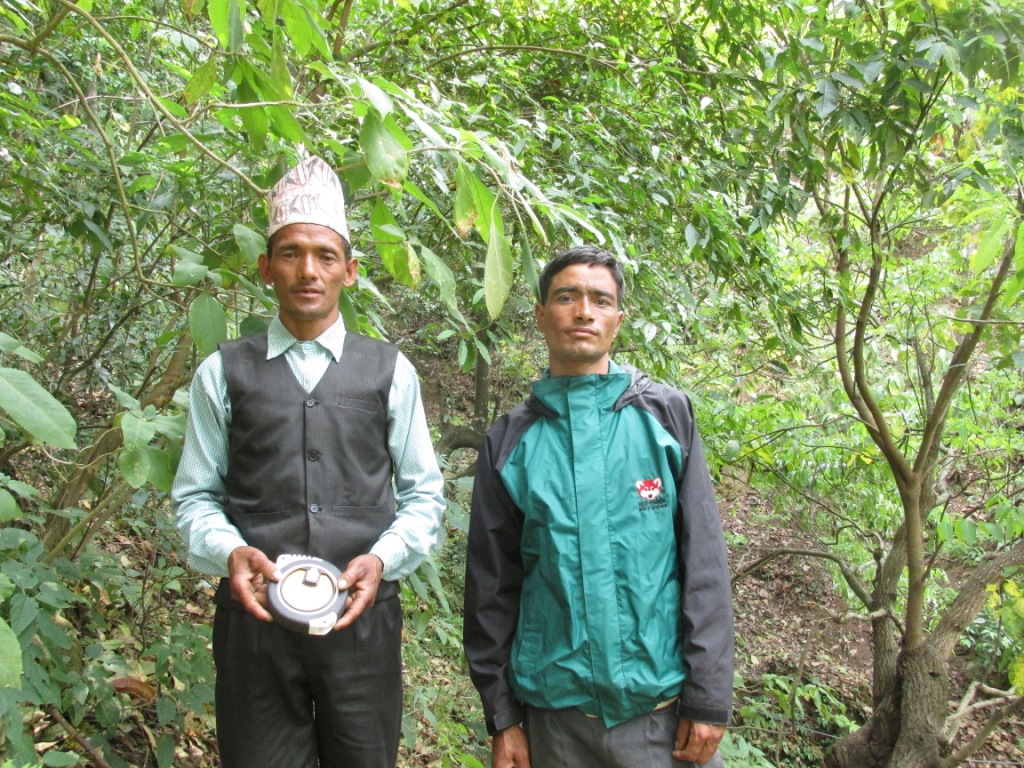 New Forest Guardians' Krishna Basnet and Nar Bahadur Basnet.
New Forest Guardians' Krishna Basnet and Nar Bahadur Basnet.
Krishna Basnet, 29, is a newly selected FG from Jajarkot, a district included in RPN’s 2017 expansion to Western Nepal. He is a member of Lata Community Forest Users Group in Kuse Rural Municipality and has been actively involved in forest monitoring. In 2017, Krishna Basnet saw a red panda for the first time: “It was a cute creature, basking in the sun sitting on a tree branch,” he said, “I am excited to be selected to protect red pandas; the animal that attracts tourists to our village and helps save our forests”.
Deforestation and habitat fragmentation, compounded by poaching and illegal trade, are immediate threats to red pandas in Nepal. Between 2001 and 2016, Nepal lost 33,800 hectares of forest (source). This is substantial especially when we consider that Nepal is significantly smaller than the state of Texas. Nearly 70 percent of red panda habitat falls outside of protected areas and are in a fragmented state.
This is where locals like Rai and the Basnets come in and can make a difference. RPN’s FGs are involved in habitat monitoring, forest protection and sustainable management, plantation and restoration of forests, anti-poaching and awareness-building in unprotected areas.
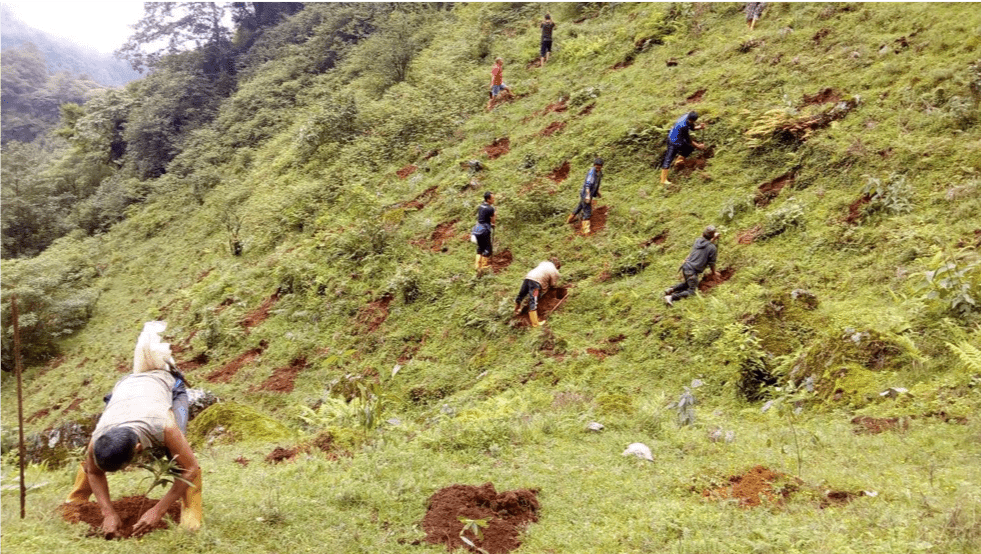 Forest restoration in Eastern Nepal.
Forest restoration in Eastern Nepal.
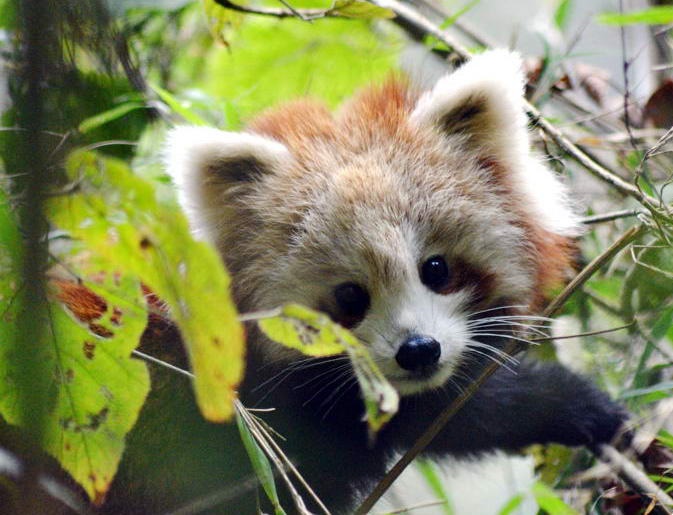 Red panda cub in Eastern Nepal.
Red panda cub in Eastern Nepal.
The FG program is coordinated by RPN, who partners with Community Forest User Groups that are established in red panda range “When we were discussing appropriate models for red panda conservation, the community-based approach was clearly best. It involved local people as forest stewards, with monitoring of red pandas at the heart of it,” said RPN’s Country Director, Ang Phuri Sherpa.
With forest loss at such alarming rates in Nepal, restoration and reforestation activities are critical to the survival of red pandas. In 2018, FGs helped to restore 25 hectares of degraded red panda habitat as well as two degraded water sources located inside red panda habitat in Eastern Nepal. RPN plans to initiate restoration programs in Western Nepal in 2019.
Yesterday was Earth Day 2019 and in celebration of this important day, we launched our Plant A Red Panda Home campaign! Funds will support the reforestation of deforested core habitat in Western Nepal’s Jajarkot, Jumla and Kalikot districts which will help create habitat connectivity that can support viable red panda populations. Thanks to Cleveland Metroparks Zoo and Beatrice Potter all donations will be matched — and your impact doubled — towards our goal of $7,000 to plant trees and restore red panda habitat in Western Nepal!
“Traversing through the remote forests in the hills is a hard job, but I feel satisfied with our efforts of turning denuded hills into forests, Rai said. “The forest and wildlife have helped us provide food for our families and supported our livelihoods.”
